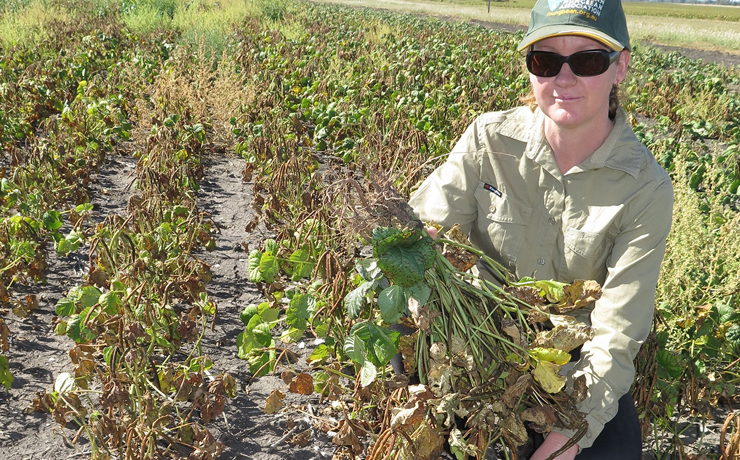
November 15, 2021
A State Government researcher has identified a new pathogen affecting mungbean crops in Queensland.
Plant pathologist Lisa Kelly has found two pathogens cause powdery mildew in mungbeans, potentially unlocking new solutions for the $100 million industry.
Powdery mildew has been present in Australian mungbean crops for at least 60 years.
“We thought only one pathogen, Podosphaera xanthii, caused the powdery mildew until our plant pathologist confirmed a second culprit lurking in the paddocks of mungbean and black gram in Australia, Erysiphe vignae sp. nov,” Agriculture Minister Mark Furner said.
“Powdery mildew has potential to cause more than 40 per cent yield losses in mungbean crops which is very costly to growers who are mainly based in Queensland and northern NSW,” Mr Furner said.
“Accurate identification of the causal species of powdery mildew will help Queensland growers better manage the risk of fungicide resistance, hopefully choose the best varieties to grow in the future and manage crop rotations to minimise the spread of the disease.
While Podosphaera xanthii is known to affect a range of crops, the newly discovered Erysiphe vignae sp. nov has so far only been found on Australian crops of mungbean and black gram.
Despite this, it is likely the new pathogen can affect other crops.
Lisa Kelly collected mungbean plants infected with powdery mildew from growers’ paddocks and identified the pathogen species under the microscope and through DNA sequencing.
“It was surprising to find that mungbean is infected by two very different species of powdery mildew and that one was an undescribed species which we got to name ourselves,” she said.
“This might help explain why powdery mildew is worse in some areas and seasons than others and scientists around the world who work on mungbeans will be able to see whether the newly discovered Erysiphe vignae also infects crops outside of Australia.
“Now that we know which species are causing the disease in Australia, we can develop strategies that will target these pathogens to better control the disease.
“We may find that host resistance or fungicide requirements differ between the two species. Host resistance and host range testing is underway currently, with results expected next year.”
The research has been published in the international journal Phytopathology.























